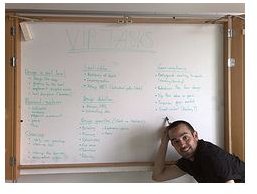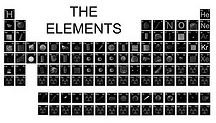Project Element Tasking: Bringing It All Together
Project Element Tasking
When you’re assigned a project to complete, your first concern is probably to determine how you’ll reach the goal of the project. Before the planning phase, you may also be thinking about how to get from point A to point B as well as the elements and tasks you need in between. Many project elements lie between point A and B and if you utilize project element tasking it’s easier to bring all the elements together for a successful completion.
What Is Element Tasking
All projects have a goal and most managers have a general idea through tried and true project management techniques what is necessary to complete the project. These techniques are actually the elements of the project. How you task out those elements will make your project run smoother.
Effective Element Tasking
The basics of any project include the project scope, resources, budget, timeline, change and risk management, monitoring, documenting, analyzing, and project completion. Every project at hand should contain these basic elements for a project to be successful. How you bring these elements all together depend upon using good project element tasking.
Effective tasking means monitoring and tracking assigned tasks to identify problems, changes, risks, and successes. Tracking assigned tasks may seem tedious, but in the long run, once established, are a great way to keep projects from being sidelined or going south.
Rather than overwhelm yourself with monitoring every assigned task, enlist the help of team leaders and project stakeholders to help you identify elements within each task. Use status reports to identify things that are working or not working.
Sample Project Element Tasking

Say your project is to come up with a new slogan for a client that sells blue jeans. In the past, your client catered to all ages, but now wants to focus on the 18-35-age market. Your goal: Create a slogan that will entice blue jean buyers between the ages of 18 and 35. Using this example, here’s how to complete effective element tasking:
- You have your project goal, but what elements are needed to complete the project. All of these are identified in your project scope. Each assigned task, however, should be tracked for correctness.
- In this example, your elements would include a budget, timeline, resources, work schedules, change control, monitoring, and presentation.
Take each of these elements and assign tasks you can track via status reports. For example, if your budget is $10,000 you will need to identify everything that budget entails.
Element task by assigning team leaders to track not just the budget, but elements within the budget. Your budget will include items like staffing, equipment needs, and trials. If team leaders can track how each of these tasks relate to the budgeting needs, it will be easier for you to keep track of your budget or quickly identify if you will be over budget.
You can also do the same with each element of your project. Once you identify the resources you need to create that new slogan, create task tracking for each resource. One resource team may be working on market research, while another is identifying what appeals to blue jean buyers between the ages of 18 and 35. Still another may be writing the slogan content. If the market research team is falling behind, the slogan can’t be written. With good element tasking, you can determine who is dropping the ball or preventing project completion.
Each phase of your project contains elements in order for the project to reach its final goal. Tracking and assigning element tasks will help you bring all the elements together so the client gets the slogan they want.
To help you implement project element tasking, read Michele McDonough’s article Outlook Task Manager: Using Task Management Features for Project Schedules. This article not only explains how to use Outlook 2007 to manage tasks, it discusses how to define and assign tasks and offers tips on how to create a status report.
Effective task management will also help your teams work separately but collaboratively. As the project manager, element tasking will easily identify changes, tweaks, and work schedules to keep the project on a good pace.
